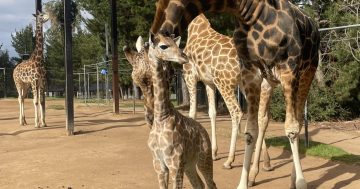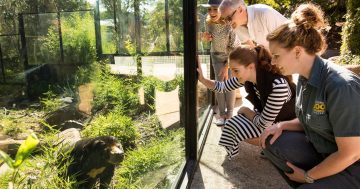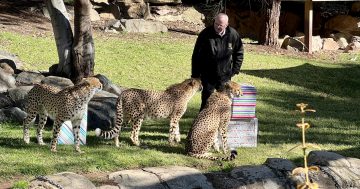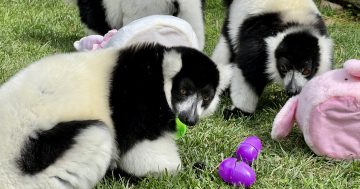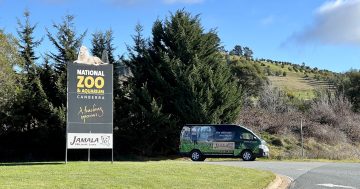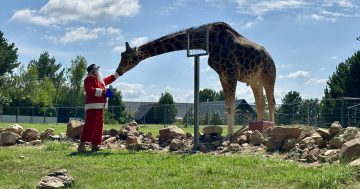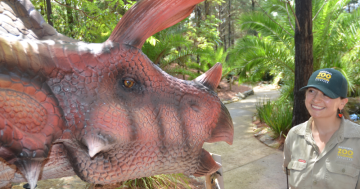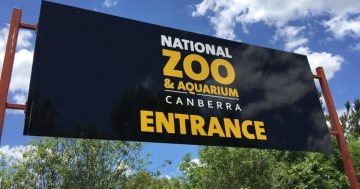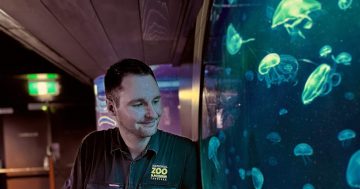
Mother koala Matilda and her young joey Namadgi at the National Zoo. Photo: Dominic Giannini.
The first koala joey to be born at the National Zoo and Aquarium has been officially named Namadgi.
Namadgi was chosen in recognition of the national park which was severely burnt during last summer’s bushfires, and followed the zoo requesting naming suggestions on its social media pages.
“We wanted a memorable name for our first koala joey that was significant and meaningful to us and to the ACT. The Namadgi National Park was an area that was so badly affected by the bushfires so we wanted to pay tribute to that,” the zoo’s Australian natives team leader Dr Danielle Johinke said.
Like humans, each koala has its own personality.
“Matilda, the mother, is such a sweet koala. She comes down and is very friendly with keepers. Bailey, the father, on the other hand, he just likes to sleep,” Dr Johinke said.
“You might see him around 2:00 pm eating his breakfast and waiting for his dinner to be put out, then he goes back to bed.”
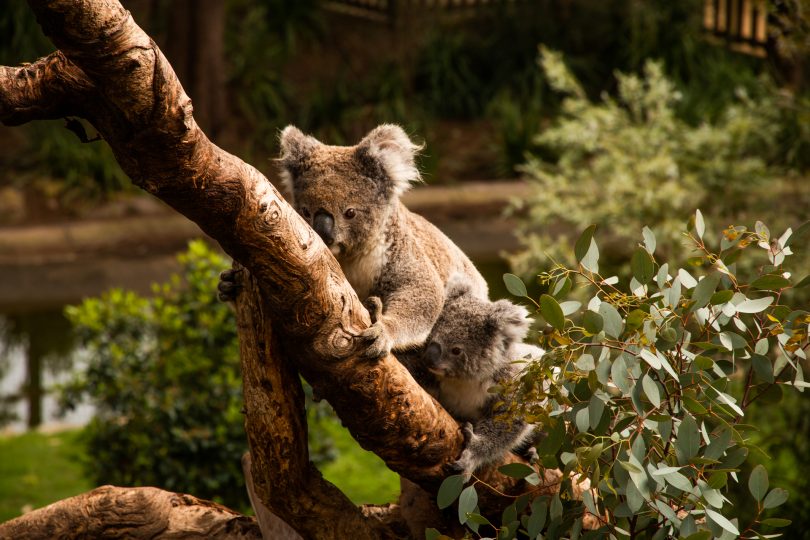
Mother koala Matilda and her young joey Namadgi at the National Zoo. Photo: Dominic Giannini.
Now almost one, zookeepers were unaware of Namadgi’s existence until May – around four months after she was born – due to the size of koala joeys.
Joeys are the size of jelly beans when they are born and do not have any legs, eyes or ears. They crawl straight into their mother’s pouch and start suckling for six months.
“She popped her head out at six months and was the size of a tennis ball, then over the last five months, she has blossomed and is now around half the size of her mother,” Dr Johinke said.
Namadgi is expected to become “99 per cent independent” over the next four months as mother Matilda prepares to mate again.
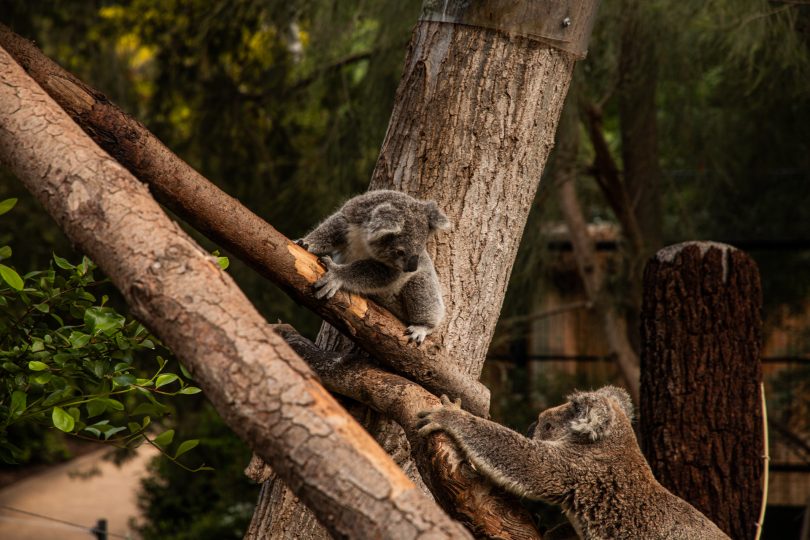
Mother koala Matilda and her young joey Namadgi at the National Zoo. Photo: Dominic Giannini.
Once native to the ACT, koala’s are now classified as extinct in the Territory, Dr Johinke said. This arose out of the devastating 2003 Canberra fires which burnt habitats, food sources and isolated koalas, making mating difficult.
“Prior to the bushfires of the last two or three seasons they were classified as vulnerable, which means we experienced a loss of around 30 per cent of the population in the last 30 years,” she said.
“Whether that status still stands we do not know yet because we are still trying to determine the extent of the loss from last year’s bushfire season.”
The dwindling population numbers are what makes the breeding program so critical.
“Breeding programs like this are essential for the longevity of the species. Koala populations in Australia are declining and any contribution we can make to improving that situation is critical to their wellbeing,” Dr Johinke said.
“Namadgi’s arrival was a tremendous feat for us and we were very, very excited.”
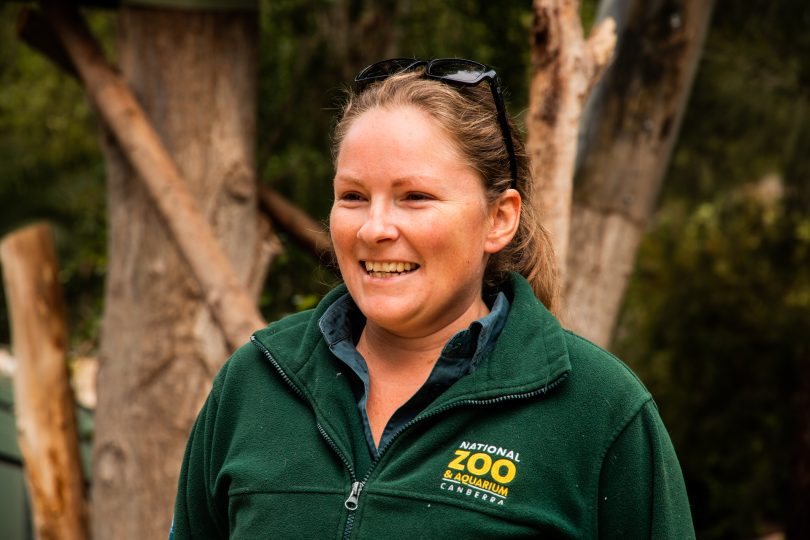
Dr Danielle Johinke is the team leader of Australian natives at the National Zoo. Photo: Dominic Giannini.
Matilda arrived in 2016 from Taronga Zoo in Dubbo and Bailey followed a few years later from the Australian Reptile Park, but this was the first season the zoo was able to engage with the breeding program as previous koalas had always been the same sex.
As for the difficulty of the breeding program at the zoo, “they do most of the work themselves”, Dr Johinke laughed.
For visiting hours and prices, visit The National Zoo & Aquarium.
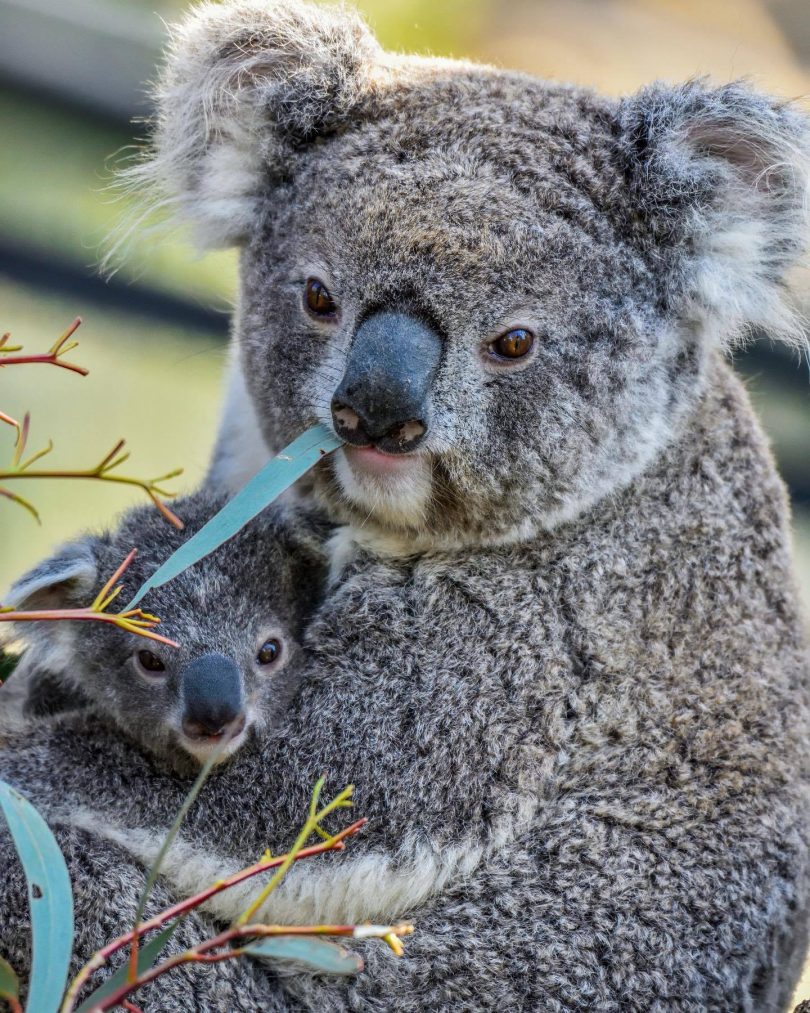
Matilda and Namadgi in September. Photo: National Zoo and Aquarium.












